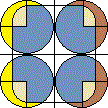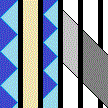![]() ;
;
![]() ;
;
![]() ;
;
; Updated in
![]() 2024 :
2024 :
![]() September :
September :
![]() 21st (Saturday) : k Pali
;
21st (Saturday) : k Pali
;
![]() ;
;
![]() ;
;
;
![]() ; Updated on
; Updated on
21 :
9 :
2024 : k
![]() Pali
;
Pali
;
| a | b | c | d | e | f | g | |||||
| h | i | j | k | l | m | n | o | ||||
| p | q | r | s | ||||||||
| t | u | v | w | ||||||||
| x | y | z | |||||||||
((![]() 29 Days,
29 Days,
![]() 29 Days,
29 Days,
![]() 29 Days,
29 Days,
![]() 29 Days),
(
29 Days),
(![]() 30 Days,
30 Days,
![]() 30 Days,
30 Days,
![]() 30 Days,
30 Days,
![]() 30 Days)) : Longitude 90 degree (K a r a k a t in Myanmar,
K a r k a t a in Sanskrit, Cancer in Latin,
observed planet Moon), Longitude 150 degree (K a n in Myanmar,
K a n y a
in Sanskrit, Virgo in Latin, observed planet Mercury), Longitude 300 degree (K o n in Myanmar,
K u m b h a
in Sanskrit, Aquarius in Latin, observed planet Saturn), also
see: Time;
30 Days)) : Longitude 90 degree (K a r a k a t in Myanmar,
K a r k a t a in Sanskrit, Cancer in Latin,
observed planet Moon), Longitude 150 degree (K a n in Myanmar,
K a n y a
in Sanskrit, Virgo in Latin, observed planet Mercury), Longitude 300 degree (K o n in Myanmar,
K u m b h a
in Sanskrit, Aquarius in Latin, observed planet Saturn), also
see: Time;
(![]() My,
My,
![]() My,
My,
![]() My,
My,
My) CASIO fx-300ES PLUS, NATURAL - V. P. A. M., TWO WAY POWER prompts (15 / √2)
is like ((15 * √2) / 2) is like 10.60660172, i.e.
![]() n i t o t t e
For
n i t o t t e
For
![]() k a k u Each
15 degree longitude, for each
k a k u Each
15 degree longitude, for each
 structural Battery (Internet of Things (IoT), kadosei
Mobility, Location Awareness Response, Near Field Communication (NFC))
... ; if
Nama For Humanoid,
also see: d Pali;
k Pali; m
Pali; s Pali;
t Pali;
v Pali;
Remark: Nama for humanoids is R&D only in holy language of Buddhism (transcript
Pali in English), because our earth is not simple like what I think e.g. NOT to
happen
structural Battery (Internet of Things (IoT), kadosei
Mobility, Location Awareness Response, Near Field Communication (NFC))
... ; if
Nama For Humanoid,
also see: d Pali;
k Pali; m
Pali; s Pali;
t Pali;
v Pali;
Remark: Nama for humanoids is R&D only in holy language of Buddhism (transcript
Pali in English), because our earth is not simple like what I think e.g. NOT to
happen 2+ hours of overwriting & resetting GPS ... ;
(( inside of ribcage life-after-life kaya _Body, also
see:
h G T S U
(heart) ... ), (
inside of ribcage life-after-life kaya _Body, also
see:
h G T S U
(heart) ... ), ( Origin of Nama ... ; Also see:
n G T S U ;
Reminder: 2 is very very
unique in many ways
e.g. () are coexistence)) ...
;
Origin of Nama ... ; Also see:
n G T S U ;
Reminder: 2 is very very
unique in many ways
e.g. () are coexistence)) ...
;
Kaba-aye, world peace; e.g. Kaba-aye pagoda in Yangon, Myanmar, world peace pagoda; Indi* people adapted "kaba" from Pali language long long time ago; Myanmar people have adapted "kaba" (world) from Pali;
Kaccāni Jātaka;
kajishin, Buddha preached in his manifest form; Nippon Buddhism; also see: Shingi;
Kakacūpama sutta;
Kakusandha Buddha, also see: 2008 Ashin Pyinnya Thiha taught suttas .htm;
Kalatha, monk (bhikkhu) 's name in meaningful Pali;
kalingaraṁ, useless rotten log;
kalyana puthujjana, good puthujjana; andha puthujjana, blind (here, "blind" refers to NOT informed one) puthujjana;
kāma,
desire;
;
Yogakkhema (kama,
bhava, ditthi,
avijja);
kāma, lust; sense-desires;
kāma, material pleasures;
māra, 10 kinds of kilesa are:
1.
kāma (material pleasures);
2. arati (aversion for the holy life);
3. khuppipāsā (hunger and thirst);
4. taṇhā
(craving);
5. thina middha (sloth and torpor);
6. bhaya (fear);
7. vicikicchā (doubt);
8. makkha thambha (detraction and obstinacy);
9. labha (gain); sakkāra
(honor); siloka (praise);
yasa (fame);
10. attukkaṁsana para vambhana (extolling oneself
that contempt others);
Remark: notice that both
good and bad can cause kilesa, and 10 kinds
of kilesa (mental defilements) are a.k.a.
māra
(sense of passions); after
![]() meditation (Also see:
Radical333), those 10
kinds of kilesa can be realized; for common people
(refer to puthujjana), Middle Path should be
... ; notice that sotāpanna level people can
control and reduce those 10 kinds of kilesa, And
Then, sakadāgāmi
level people, And Then, anāgāmi
level people, ... ;
meditation (Also see:
Radical333), those 10
kinds of kilesa can be realized; for common people
(refer to puthujjana), Middle Path should be
... ; notice that sotāpanna level people can
control and reduce those 10 kinds of kilesa, And
Then, sakadāgāmi
level people, And Then, anāgāmi
level people, ... ;
kama loka, reborn only once again in this world (kama loka) once-returner; also see: reborn in heavenly sphere (rupa loka) or (aruga loka) ... ;
kāmaloka, sense sphere (refer to human beings plane (realm) and six celestial planes (heavenly realms));
e.g. in kāmaloka (sense sphere), sagga (full of happiness) ... ;
kāma-bhūmi, realm of sensual pleasure; in Khamer, bhūmi is aka nation, aka state;
kāma-sukha, sensual pleasure;
Kamabumi, a realm, aka kāma-bhūmi, also see: 2008 Ashin Pyinnya Thiha taught suttas .htm;
kamac chanda, sensual desire;
kāmacchanda, sense desire; Also see: nivaraṇa;
kāmada sutta;
kāmarāga, sense-desire, a fetter to be weakened at 2nd stage enlightenment, also see: sakadāgāmi;
kāmatanhā, sensual pleasures; also see: tanhā;
((kamma,
a.k.a. karma, a.k.a. kharma)
Action);
kamma, aka
kharma, aka karma, also see:
kāma; kamma literally means action, in its ultimate
sense, kamma means meritorious and
de-meritorious
volition aka kusala akusala
cetanā;
Conservatively in Theravada Buddhism, 3 kinds of
karma
...
basically 3 kinds are physical
kamma, verbal kamma,
and mental kamma;
do good kharma
Action, good results will
... ;
kamma niyāma, order of act and result, for example: desirable and
undesirable acts produce corresponding good and bad results; also see: order 1.
of niyāma
;
kammayoni, matrix of action; also see: samsāra;
kampa, to loosen;
Kandaraka suttanta;
kaṇhaṁ
dhammaṁ, 10 kinds of evil deeds;
; Also see:
sukkaṁ
(10 kinds of good
deeds);
Kanhnagotamaka, also see: 2008 Ashin Pyinnya Thiha taught suttas .htm;
kankhā vitarana visuddhi, doubt overcoming purification;
Kannon, Goddess of Mercy, aka Guanyin; Mahayana Nippon; IFF 33, also see: 108 configuration;
kārakassa manoratham pūretīti puññam, merit is puñña, it helps fulfill wishes of merit doers;
Karaniya Sutta, also see: kāya* ;
![]() karma
karma
[
THE JOY OF LIVING ],
aka kamma, aka
khamma; action; activity;
w a z a Act;
do good kharma
Action, good results will
... ;
karunā,
compassion, aka one of the 4 sublime states
;
karunā,
compassion; sympathy;
Kassapa, a monk's name, in 2500+ years ago, , also see: 2008 Ashin Pyinnya Thiha taught suttas .htm;
Kassapa Buddha, also see: 2008 Ashin Pyinnya Thiha taught suttas .htm;
kathā vatthu, Points of controversy, aka 3rd of abhidhamma pitaka;
kathina;
in common, WHEN end of vassa, donating robes to
monks; for
each
year, celebrating end of 3 months seasonal retreat;
Sīmā, sacred place WHERE ordination performs; Sangha's activities (e.g. Kathina), held at the place;
kaya,
body; Also see: sabba kaya;
IFF
(kaya and
nama) also see:
2;
kāya,
body aka physical phenomena; Also see:
dva ttimis
ākārā,
32 parts of the body;
asavak khaya, extinction of corruptions; vijjā caraṇa (8 kinds of knowledge, 15 kinds of conduct), notice that "khaya" is one of the 8 kinds of knowledge;
(kaya
a.k.a. body) with higher temperature is like fever, on the other hand, lower
temperature happened IFF after organ failure
(e.g. abnormal heart rate (HR) > 144);
(e.g. abnormal O2 < 98); inside of ER (Emergency
Rooms), we can do (curing,
![]() Recovery)
lymph nodes' disorder, caused by (harmful, unwanted)
Substances ... ;
Recovery)
lymph nodes' disorder, caused by (harmful, unwanted)
Substances ... ;
kaya and nama are
coexistence;
![]() Radical191;
Radical191;
![]() PHYSICS,
law
ninety two, kaya & nama,
... ;
PHYSICS,
law
ninety two, kaya & nama,
... ;
Usage e.g. ("inside
of ribcage
life-after-life kaya _Body"), e.g.
("![]() two hundred and six,
two hundred and six,
![]() 206)
bones"),
also see:
Orthopedic Dx;
206)
bones"),
also see:
Orthopedic Dx;
(![]() water,
water,
Water,
![]() water,
water,
![]() Water) % e.g. approx. (
Water) % e.g. approx. (![]() 65) percentage Water in (kaya a.k.a. body), And
Then, approx. (
65) percentage Water in (kaya a.k.a. body), And
Then, approx. (![]() 75) percentage Water in muscles, And Then, approx. (
75) percentage Water in muscles, And Then, approx. (![]() 80) percentage Water in blood; Also see:
Nanobot . Programming . Mapper;
80) percentage Water in blood; Also see:
Nanobot . Programming . Mapper;
kaya sankhara, bodily formation;
kaya viveka, bodily separation from crowd; also see: viveka;
kāya-nu-passanā, kāya body + anu continuously + passanā seeing; yogi have to see physical phenomena in body repeatedly;
kāya-nu-passanā, noun form of kāya-nu-passi; Also see: nupassi;
kāya-nu-passi, the word kāya-nu-passi alone clearly explains what the work of meditation is kammatthāna;
kāyānupassanā, a.k.a. kāya-nu-passanā; kāyānupassanā, contemplation of the body;
4 foundations of mindfulness (kāyānupassanā, vedanānupassanā, cittānupassanā, dhammanupassanā); also see: 37 Factors of Enlightenment, Bodhipakkhiyadhamma = 4 + 4 + 4 + 5 + 5 + 7 + 8;
 inside of ribcage life-after-life kaya _Body; Also
see:
b G T S U; k Pali;
Physics Law 1024;
Schematic Dimensional;
Schematic Symbols;
inside of ribcage life-after-life kaya _Body; Also
see:
b G T S U; k Pali;
Physics Law 1024;
Schematic Dimensional;
Schematic Symbols;
Kelasa, monk (bhikkhu) 's name in meaningful Pali;
khamma, a.k.a. Kharma; to do good Kharma, also see: IoT; Location Awareness Response;
khamma, also see: karma;
khanda, 5 aggregates;
to
understand
![]() WHAT is 5 aggregates, 1st to understand Maha sati
patthana Sutta; because, Maha sati
patthana Sutra, classified into: (sati
(4);
paramattha (kaya
(28), citta (2 (9, 16)),
dharma
nupassana
(5), (kaya & nama) as
induction one, (knowledge (50)));
khanda (5); vipallasa
(4); ... ; ... )
;
WHAT is 5 aggregates, 1st to understand Maha sati
patthana Sutta; because, Maha sati
patthana Sutra, classified into: (sati
(4);
paramattha (kaya
(28), citta (2 (9, 16)),
dharma
nupassana
(5), (kaya & nama) as
induction one, (knowledge (50)));
khanda (5); vipallasa
(4); ... ; ... )
;
khandha sutta, also see: 2008 Ashin Pyinnya Thiha taught suttas .htm;
asavak khaya, extinction of corruptions; vijjā caraṇa (8 kinds of knowledge, 15 kinds of conduct);
Dāruk khandha sutta;
khanika-samādhi,
momentary concentration; to gain only with effort, also see: 3 stages of effort;
khanika-samādhi, momentary concentration, one of the
5 jhāna factors;
Khuddaka nikāya, Smaller collection, aka 5th of sutta pitaka;
Khuddaka pātha, Shorter texts; also see: Khuddaka nikāya is subdivided into 15 books; 5.* ;
khuppipāsā, hunger and thirst;
māra, 10 kinds of kilesa are:
1.
kāma (material pleasures);
2. arati (aversion for the holy life);
3. khuppipāsā (hunger and
thirst);
4. taṇhā
(craving);
5. thina middha (sloth and torpor);
6. bhaya (fear);
7. vicikicchā (doubt);
8. makkha thambha (detraction and obstinacy);
9. labha (gain); sakkāra
(honor); siloka (praise);
yasa (fame);
10. attukkaṁsana para vambhana (extolling oneself
that contempt others);
Remark: notice that both
good and bad can cause kilesa, and 10 kinds
of kilesa (mental defilements) are a.k.a.
māra
(sense of passions); after
![]() meditation (Also see:
Radical333), those 10
kinds of kilesa can be realized; for common people
(refer to puthujjana), Middle Path should be
... ; notice that sotāpanna level people can
control and reduce those 10 kinds of kilesa, And
Then, sakadāgāmi
level people, And Then, anāgāmi
level people, ... ;
meditation (Also see:
Radical333), those 10
kinds of kilesa can be realized; for common people
(refer to puthujjana), Middle Path should be
... ; notice that sotāpanna level people can
control and reduce those 10 kinds of kilesa, And
Then, sakadāgāmi
level people, And Then, anāgāmi
level people, ... ;
kilesa, defilement;
kilesa,
mental defilements;
;
IFF
Mahayana Buddhism, also see:
108;
kilesa, passions;
10 kinds of kilesa are a.k.a. m ā r a;
kilesā-kāma, sensual desire; desire for them;
kilesa-vera a.k.a. akusala-vera, internal enemy in the form of unwholesomeness or mental defilements, also see: the discourse on enemy; 2 kinds of enemy are internal enemy and external enemy;
kilesāmete pavatti-dukkhā, āyatim ca dukkha-hetu-bhūtā, horrible suffering now and in the future;
kiriya, inoperative;
Kodañña, one of the 8
arahants;
KODHA VAGGA; also see: vagga;
Konagamana Buddha, also see: 2008 Ashin Pyinnya Thiha taught suttas .htm;
Kosala, a king's name, 2500+ years ago;
Virudaka of Kosala;
kshatriya, politician, warrior, 1 of the 4 castes in ancient India; also see: brahmana; shudra; vaishya;
ku, disgusting;
kukkucca, worry, nivarana, hindrance, thina, sloth, middha, torpor, uddhacca, restlessness; Also see: Satipatthana meditation;
kusala, 10 kinds of meritorious deeds:
1.
generosity;
2.
morality;
3. meditation;
4. reverence;
5. service;
6.
transference of merit;
7. rejoicing in others' merit;
8. hearing the doctrine;
9. expounding the doctrine;
10. straightening one's view;
kusala, wholesomeness (merit); akusala unwholesomeness (demerit); kusala, wholesomeness; wholesome mental states aka nekkhamma;
Also see: puñña, merit WHICH cleanses the mind; kusala is another usage for puñña;
kusala akusala cetana, meritorious and de-meritorious volition WHICH causes ultimate sense, and then the ultimate sense becomes law of kamma aka karma;
kusalā anavajja-sukhavipāka-lakkhanā, wholesomeness which is characterized as flawlessness and pleasant result;
kusalakari
(![]() monastery name), also see:
index;
www.kusalakari.net;
monastery name), also see:
index;
www.kusalakari.net;
Kuvera, also see: 2008 Ashin Pyinnya Thiha taught suttas .htm;
...
|
|
|